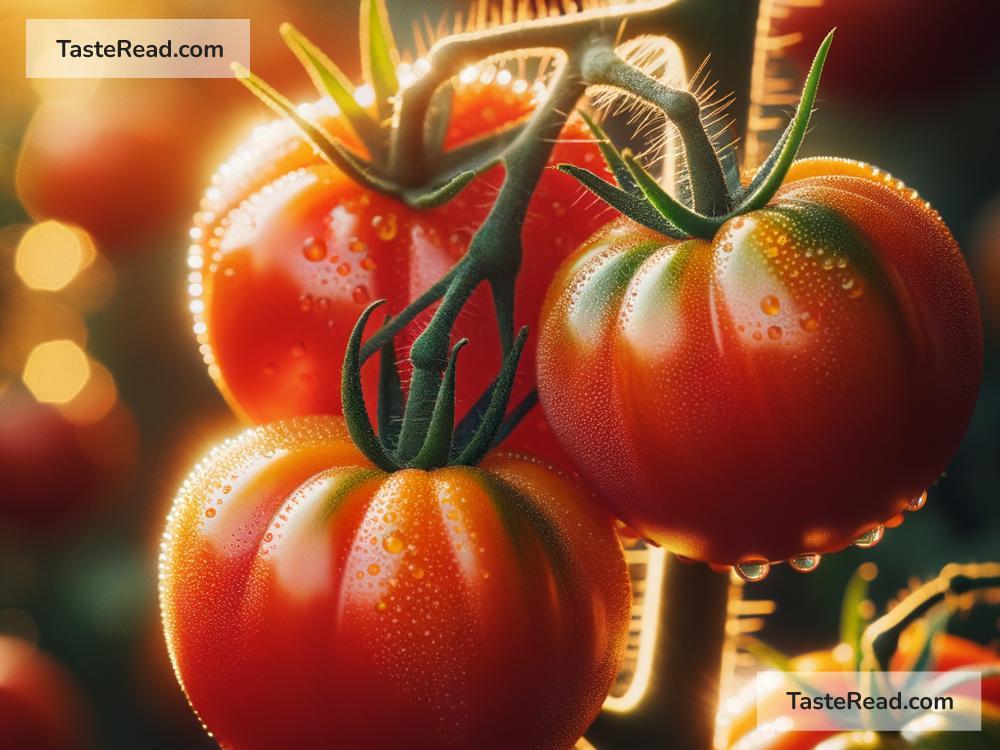How Light Exposure Affects the Color and Flavor of Tomatoes
Tomatoes are one of the most widely loved vegetables (technically fruits!) because of their vibrant colors, juicy texture, and delicious flavors. But have you ever wondered what makes a tomato red and flavorful? One of the key factors is light exposure. In this blog, we’ll explore how sunlight affects the color and taste of tomatoes, breaking it down in simple terms.
The Role of Light in Tomato Growth
Just like people need sunlight to thrive, plants do too. Tomatoes rely on sunlight to grow and become healthy. Sunlight is critical for a process called photosynthesis. Photosynthesis is how plants use the energy from sunlight to convert water and carbon dioxide into food. Without enough light, tomatoes won’t grow properly.
But light doesn’t just help tomatoes grow; it also plays a big part in how they look and taste. The amount of sunlight a tomato plant gets during the growing process can directly affect the color, sweetness, and overall flavor of its fruit.
Light and Tomato Color
One of the most recognizable traits of a tomato is its bright red color. This color comes from a pigment called lycopene, which is produced by the tomato as it ripens. Lycopene is not only important for the tomato’s appearance; it also has health benefits for humans, such as supporting heart health.
Here’s where sunlight comes in: Lycopene production increases when tomatoes are exposed to the right amount of light. The more light the fruit absorbs, the better its chances of developing a deep, rich color. If a tomato doesn’t get enough sunlight, its color may end up pale and uneven. Instead of the bold red we expect, it might look dull or yellowish.
Farmers and gardeners often position tomato plants in places where they’ll get plenty of sunlight to ensure the fruits ripen evenly and achieve the best color possible. However, too much direct sunlight for long periods can sometimes cause “sunscald,” a condition where the fruit develops white, damaged patches. So, tomatoes need just the right balance of light exposure to look their best.
Light and Tomato Flavor
The flavor of a tomato is a combination of sweetness, acidity, and the unique compounds that make it aromatic. These flavors depend quite a bit on how well the fruit ripens—and ripening is influenced by light.
When tomatoes ripen in the sun, their sugar levels rise. These sugars make the fruit sweet and delicious. At the same time, compounds responsible for the tomato’s tangy and slightly acidic taste also develop. Together, this balance of sweetness and acidity creates that signature tomato flavor we all love.
If tomatoes are grown in shady conditions or indoors without enough light, they may not develop their full flavor. They could taste bland or less sweet because their sugar content is lower. This is why tomatoes grown in sunny fields often taste better than those grown in low-light environments.
Light Controls Ripening
Sunlight doesn’t just make tomatoes colorful and flavorful—it also controls how quickly they ripen. Have you noticed that tomatoes growing outside in the sun ripen faster than those kept indoors or in the shade? That’s because light triggers the production of hormones like ethylene, which help the fruit ripen.
Once a tomato ripens, its nutritional content improves too. Sun-ripened tomatoes are rich in vitamins like vitamin C and antioxidants like lycopene. These nutrients are not only good for the tomato itself but are also great for the people who eat it!
What About Artificial Light?
In modern farming, some growers use artificial light to grow tomatoes indoors—especially during cold months or in places with limited natural sunlight. Artificial light can replicate the effects of sunlight to help tomatoes grow, but it’s not always perfect. Indoor-grown tomatoes might not have the same intense flavor or color as their sun-grown counterparts. This is why people often say that tomatoes grown outdoors taste better—they have the advantage of soaking up natural sunlight.
How to Grow Flavorful, Vibrant Tomatoes at Home
If you’re growing tomatoes at home in your garden, there are a few tips to make sure they get the right amount of light:
-
Choose a sunny spot: Tomatoes need around 6-8 hours of sunlight every day to grow well. Make sure your plants are in a bright location.
-
Balance light and shade: While tomatoes love the sun, too much intense light in very hot climates can cause damage. If temperatures are extremely high, consider using a shade cloth during the hottest part of the day to protect them.
-
Prune leaves: Large leaves on tomato plants can block light from reaching the fruit. Trimming some of the lower leaves will ensure that sunlight reaches all parts of the plant.
-
Rotate plants: If you’re growing tomatoes every year, try rotating your plants to different spots in your garden to ensure they always get optimal sunlight without exhausting the soil.
Conclusion
Light plays an essential role in making tomatoes colorful and flavorful. Sunlight helps the plant produce the pigments and sugars that give tomatoes their vivid red color and delicious taste. While too much or too little light can cause problems, the right amount ensures tomatoes ripen perfectly.
Whether you’re buying or growing tomatoes, knowing how light impacts their color and taste can help you appreciate what makes these fruits so special. So next time you bite into a juicy, sun-ripened tomato, take a moment to thank the sunlight for working its magic!


